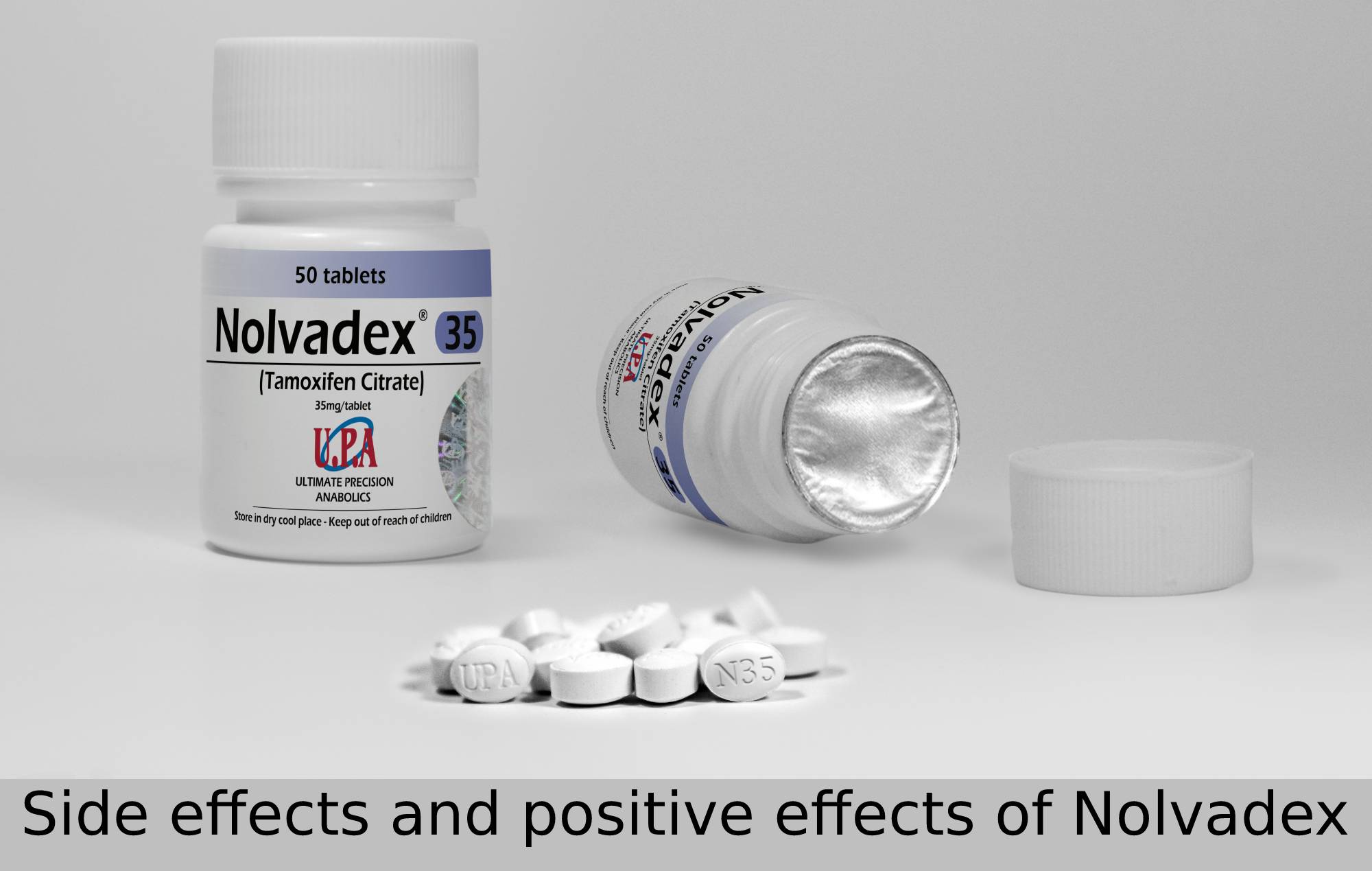Positive effects of Nolvadex

Nolvadex is a tablet-based medicine used to treat breast cancer. It suppresses the action of hormones and prevents the effects of estrogen on tumor cells. By binding to estrogen receptors like estrogen, it translocates to the tumor cell nucleus and blocks the action of estrogen.
Doctors prescribe Nolvadex to women whose cancer has spread throughout the body – it slows or stops the spread of tumor cells. In addition, the drug has been shown to be effective in reducing the risk of recurrence of certain types of early-stage breast cancer.
Nolvadex is prescribed to women at high risk for breast cancer to reduce the risk of contracting the disease. It is a kind of alternative to vigilant waiting or breast removal surgery, called a mastectomy, before the disease manifests itself.
Nolvadex is prescribed for:
- Treatment of an early form of breast cancer, ductal carcinoma in situ (DCIS), in combination with surgery.
- Treatment of abnormal breast cells – lobular carcinoma in situ (LLIS) to reduce the risk of them becoming cancerous.
- Treatment of hormone-dependent breast cancer in men and women whose growth of cells depends on estrogen.
- Treatment of breast cancer when it comes back or has spread to other parts of the body.
- To reduce the risk of cancer in women who are predisposed to the disease.
Nolvadex in men is also used after a course of anabolic steroids to stimulate the natural production and increase of testosterone, which has been suppressed due to steroid use.
In this case, tamoxifen stimulates the production of luteinizing hormone (LH) and follicle-stimulating hormone (FSH) in the pituitary gland, which in turn affects the production of testosterone in men. Without LH and FSH, there is no natural testosterone production; LH plays a major role in this process. Because of this effect, Nolvadex is sometimes prescribed to men to treat infertility.
Side effects of Nolvadex for men

Although Nolvadex is actually an effective drug for men, it can cause side effects. The most common problems are associated with very long-term use, for example in patients with breast cancer. With long-term use, Nolvadex citrate can suppress the production of insulin-like growth factor (IGF-1) to some extent.
The peptide hormone IGF-1 is considered to be more powerful than the growth hormone itself to build muscle tissue. However, when taking most anabolic steroids, IGF-1 increases dramatically and tamoxifen will not be able to suppress it greatly.
Although Nolvadex is classified as an estrogen antagonist (opponent), tamoxifen actually acts as an estrogen agonist in certain parts of the body. This means that it acts like estrogen.
For example, by acting in this way in the liver, Nolvadex can increase the level of sex hormone binding globulin (SHBG) in men, which inactivates testosterone and thereby reduces free testosterone in the body. Free testosterone is the unbound testosterone in the body, and it is this level that is strongly correlated with the positive effects of high testosterone, such as increased muscle mass, strength and libido. By lowering free testosterone, Nolvadex can impair muscle development, so it should not be taken in isolation from other muscle-building drugs. Despite a significant increase in testosterone due to tamoxifen, the effect of the main male hormone is offset due to an increase in SHBG.
Other side effects of Nolvadex in men include:
- Impaired cognitive abilities (thinking, memory, etc.) (9% of men).
- Weight gain (22% of men).
- Sexual disorders (22%).
- Hot flushes (13%).
- Blood clots, risk of thrombosis (9%).
- Vision problems (3% of men).
If Nolvadex is prescribed to patients, side effects with different symptoms and consequences may occur. This applies to cases where the drug is taken by women or men during bodybuilding. It is strictly forbidden to take such drugs on your own.
Side effects of Nolvadex for women

This drug blocks the activation of female sex hormones by cancer target cells (they are located in the tissues of the mammary gland). It is an estrogen hormone antagonist. In the womb, it increases female estrogen activity.
This explains why this drug is prescribed for the prevention and treatment of breast cancer in women.
In women, side effects of treatment with this drug may include:
- Uterine cancer. It has been proven that the active substance in this medicine may increase the risk of endometrial cancer. The reason lies in the fact that tamoxifen has the ability to promote the growth of this drug. It is especially dangerous to drink such pills for women with breast cancer.
- Endometriosis. It is a benign growth of the lining of the uterus. Regardless of the stage of the disease, tamoxifen is able to aggravate its course.
- There are studies that show that this drug can cause uterine sarcoma – 1% of cases.
- Women often have an increased risk of fertility problems. Women taking tamoxifen complain of infertility. Clinical data show that if the patient maintains a regular menstrual cycle, after the end of taking such a drug, it is possible to become pregnant.
- Hair thinning. This is due to the fact that the drug reduces the amount of estrogen, a hormone that indirectly affects the condition of the skin. It is recommended to use special varnishes that can save the nails.
- Some women notice that when they started using tamoxifen, they started having memory problems.
- Very rare and not always proven side effects of taking tamoxifen include visual impairment. Most often this happens if the patient has exceeded the recommended dose or self-medicated.
- Liver cancer if a woman takes such a drug in large doses.
- Prolonged use of Tamoxifen can cause masculinization phenomena in women. Characterized by the development of virilization, increased hair growth over the upper lip.
Nolvadex is not used:
- if you are allergic to the active substance;
- with intolerance to auxiliary components;
- with severe thrombocytopenia;
- with leukopenia;
- with hypercalcemia;
- during pregnancy;
- when breastfeeding.
